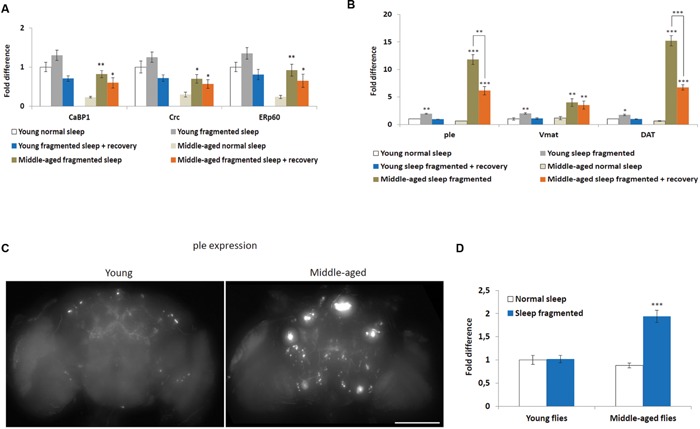FIGURE 4.

Sleep fragmentation induces ER molecular chaperone and dopaminergic pathways. (A–D) Either 5–7 or 25–27 days old control, sleep fragmented or males allowed to recover for 4 days after sleep fragmentation were used. (A) The expression of endoplasmic reticulum molecular chaperones CaBP1, Crc, and ERp60 was assessed. (B) The expression of genes involved in dopamine production or signaling (ple, Vmat, and DAT) were assessed. (A,B: n = 25 male heads per treatment, *P < 0.05, **P < 0.01, ***P < 0.005 compared with controls, one-way ANOVA with Tukey’s post hoc test for multiple comparisons). (C) Brains from with young or middle-aged ple-GAL4;UAS-GFP males that were sleep fragmented for 4 days. Fluorescence indicates ple transcription in dopaminergic neurons. Presented as a Z-project (Z = 2 μm, 75 slices total Size bar = 200 μM). (D) Mean brain fluorescence intensity between young and middle-aged normal sleep and sleep fragmented groups. Normal slept young flies were set as 100%, represented as 1 on the graph. (D: n = 20 male heads per group, ***P < 0.05 compared with controls, one-way ANOVA with Tukey’s post hoc test for multiple comparisons). In all graphs error bars indicate SEM.
